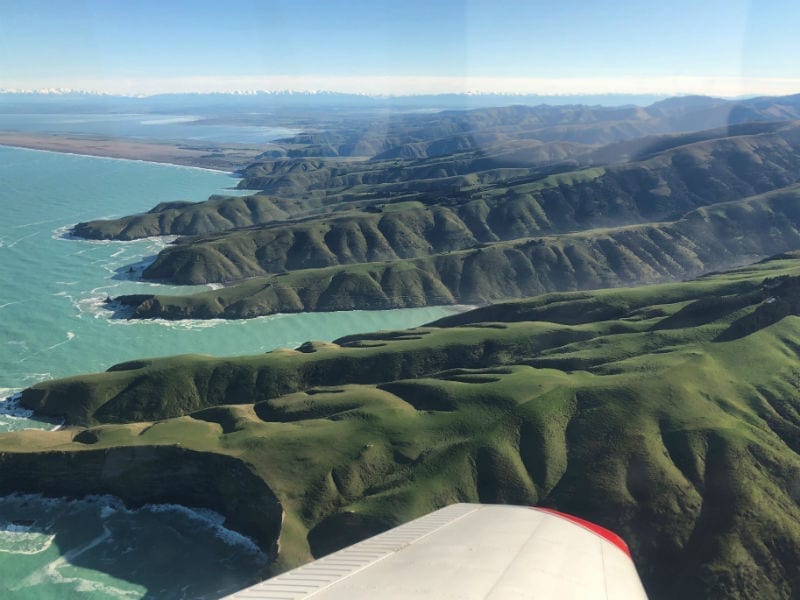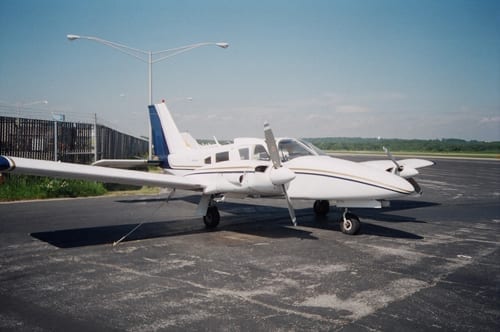
Growth over comfort – true for airplanes and kids
I was thereGrowth over comfort. I’m not sure when I learned that phrase or where I heard it, but it completely sums up my experiences of becoming a pilot. I certainly was not comfortable the first time that small plane rose off the runway. I was not comfortable the first time I heard that stall horn blare, and I certainly was not comfortable the first time I turned final and my instructor said, “Your airplane.”

Friday Photo: a rainy sunset
Friday PhotoViewing a sunset from the cockpit of a small airplane is always beautiful, but add in some clouds and maybe even a little rain and things get even better. Rick Spencer took this photo from his Cessna 182 on the way home to Arkansas from South Carolina, and the variety of colors makes for a gorgeous end to the trip.

Compound emergency – a line boy learns a lesson
I was thereI thought for a spell, (it’s always bad when a pilot starts thinking) and decided even though I had been taught never to leave a running airplane unmanned, it would be alright this time because, heck, I was an expert! Besides, I was in a hurry, and the parking brake would hold it.

Fear the reader – my first charter seaplane flight
I was thereThe day was June 8, 2018. After a long and laborious process to get my FAA Part 135 Air Taxi Certificate, I had finally scheduled my first revenue-generating charter flight in my 1959 de Havilland Beaver on amphibious floats. This 200-mile round trip flight was planned from Gig Harbor’s Tacoma Narrows Airport to Roche Harbor Airport in the San Juan Islands.

“Is it always like this?”
OpinionThe purpose of programs like the EAA Young Eagles and Civil Air Patrol Cadet orientation flights are to introduce our youth to aviation. It is not only a good thing to do in and of itself. It is essential if we are to pass on our aviation heritage so that it can continue and develop through the future. Sometimes, though, I think we focus too much on the airplane or on piloting, and not enough on flying.

Friday Photo: snowy mountain peaks
Friday PhotoThe Rocky Mountains are famous for offering stunning views of snowy mountain peaks, but the Monashee Mountains in Canada are close behind. In this Friday Photo, Ken Finlayson shares a picture he took of the range while on a cross country training flight. Not a bad office view.

Aviation addiction syndrome – it could happen to you
I was thereDon’t look now, but there might be a pilot inside you trying to get out. Just ignore the voice in your head telling you not to chase your dream. That’s what I did.

For want of a nail…
I was thereI got the news the hard, modern way: skimming local news on my smartphone, I cried out to my wife, “Don and Nancy [names changed for privacy] were killed in an airplane crash!” I could think of little else for hours afterward. Why? Did they run out of fuel? Throw a prop blade? Hit geese?

A pilot’s dilemma: inoperative instruments or equipment
TechniqueA recent legal interpretation by the FAA’s Office of Chief Counsel (dated June 13, 2018) addresses the rule on operating an aircraft with any inoperative instruments or equipment, FAR 91.213. It gives us an opportunity to review this sometimes complex rule that has bedeviled many general aviation pilots and owners for years.

Friday Photo: San Juan Islands
Friday PhotoMany people outside the Pacific Northwest don't know about the San Juan Islands, but to those who do know, they are a favorite flying spot. Bill Lombard shares this photo of the deserted islands just outside of Seattle in this Friday Photo. He took it from his Cessna 182 on a return flight from completing some IFR training.

The emergency that wasn’t
I was thereThe sun was low on the horizon as we got to the plane, and the idea of a takeoff over the water after sundown was low on my list of fun things to do with a tired/hungry kid in the right seat. Everything was normal until I got to the oil.

Avionics transitions – ain’t nothing like the real thing
John's blogAfter logging about 1,000 hours in a Pilatus PC-12 with a combination of round dials and EFIS tubes, the cockpit was recently transformed with a pair of Garmin G600 TXi primary flight displays (PFDs). The bright screens filled with synthetic vision views are simply incredible, and I genuinely feel safer flying behind them, but they also sent me back to school.

Video tip: talking with air traffic controllers
Video TipSome pilots are afraid of Air Traffic Control (ATC), as if the voice on the other end of the radio is trying to catch pilots making mistakes. That's just plain wrong, as this video shows. Controllers are humans just like pilots, and they're actually there to help. Meet Eddie Albert from Cincinnati Approach and learn what controllers expect from pilots, plus some tips for getting the route you want in flight.

My intentional gear-up landing
I was thereI needed to get to work soon. I glanced at my phone to check the time, just as I saw Tex put the gear handle down. I heard the familiar whir of the hydraulic gear pump, but I felt an abnormal shimmy in the airframe. I knew then that we had a problem, and I dropped my phone back into my shirt pocket.

Friday Photo: Banks Peninsula, New Zealand
Friday PhotoNew Zealand sometimes looks like another planet, and this Friday Photo shows why. Andre Michaelides took this photo of the Banks Peninsula from his Piper Warrior, which shows ancient volcanic rock, a beautiful blue-green lake, and the Southern Alps mountain range all in one shot. As he says, it's "scenery for the soul."

How to use a Skew-T Log-P diagram
Weather GeekWhether you're a high or low altitude pilot, you can see how the temperature and amount of moisture in the air changes as you rise and descend through the atmosphere. How can we better understand these vertical changes to improve weather safety and awareness? Let's get acquainted with a meteorological diagram called a Skew-T Log-P.

Adventure at AirVenture – the experience of flying to Oshkosh
I was thereFor those who have never done this, the rules are really simple but prescriptive. You are to approach Ripon and find another plane to follow, 1/2 mile in trail, at 1800 feet and 90 knots. Here is what the NOTAM does not say: NOT 78 knots, NOT 2000 feet, NOT 110 knots, and NOT direct from Ripon to Fisk.

Friday Photo: Angel Falls, Venezuela
Friday PhotoAngel Falls is undeniably breathtaking from any perspective. With a height over 3,200 feet, it is the highest uninterrupted waterfall on Earth and a powerful testament to nature's power. Some 80 years after American pilot Jimmy Angel first flew over the falls, Douglas Olivares snapped this photo from his Cessna 172, complete with a partial rainbow.

How to safely solo a student in minimum time
OpinionAnother CFI joined me in the grass area between the runway and the taxiways, as we both watched my student solo. I enjoyed smiling to the CFI who joined me and my student waved at me as he passed us halfway on his second takeoff roll. The student was smiling and waving at me with confidence in what he was doing - with only six hours of total time.

A multi-engine rating in a weekend
I was thereI recently added a multi-engine rating to my commercial certificate and it was one of the most fascinating experiences of my 30+ year flying career. Obtaining the rating was a bucket list thing. In light of the time available to me for flying, I chose to do an accelerated program held over a weekend to minimize the impact on my work schedule.
